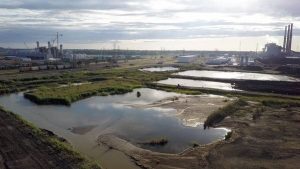
Protect Our Aquifer (POA) is on a mission to protect, conserve and preserve the Memphis Sand Aquifer. For centuries, the aquifer has provided clean water to millions in the Memphis area and across the mid-South. POA formed in 2016 to halt Tennessee Valley Authority plans to cool a new power plant in Memphis with drinking water from the aquifer. Thanks to POA’s efforts, the state ordered the TVA wells amended for emergency use only – an important win for the majority black and low-income neighborhoods in Memphis and Shelby County most in danger of environmental injustice. As one resident said, “Our drinking water belongs to us. Why should we allow TVA management, who live in Knoxville, not Memphis, decide the fate of our aquifer?” Protecting the aquifer and those dependent upon it, POA works to build community ownership of aquifer water; improve water management; promote remediation of pollutants; protect aquifer recharge zones from destructive developments; and sustain these efforts for decades to come.
Four guiding values rule every action POA takes: 1) inclusion of all water users across a diverse regional population; 2) integrity in science-driven decisions for groundwater protection; 3) advocacy by fierce water defenders from affected communities; and 4) celebration of model stewards and stewardship. Besides successfully challenging TVA’s plans for cooling its plant from the ancient aquifer, POA helped pressure the city to reject a new contract with TVA in 2022. They played a role in forcing TVA to clean up coal ash from its Allen Fossil plant, a site with high levels of toxins, and their efforts led to the Carrier corporation dropping its proposal to inject treated water back into the aquifer. Currently, they join other environmental advocacy groups in calling for greater transparency and community involvement around Elon Musk’s proposed xAI plant, which will build the world’s largest supercomputer in Southwest Memphis, already a heavily industrial and overburdened minority community.

The coal ash ponds are open pits where residuals were dumped after burning coal for electricity for nearly 60 years. (From POA Website)